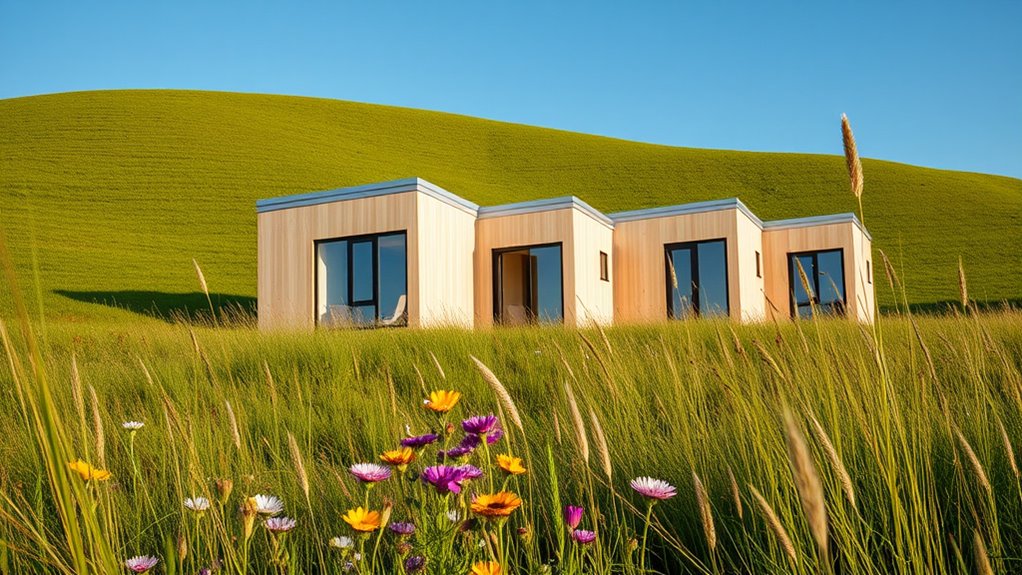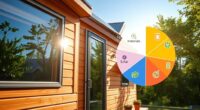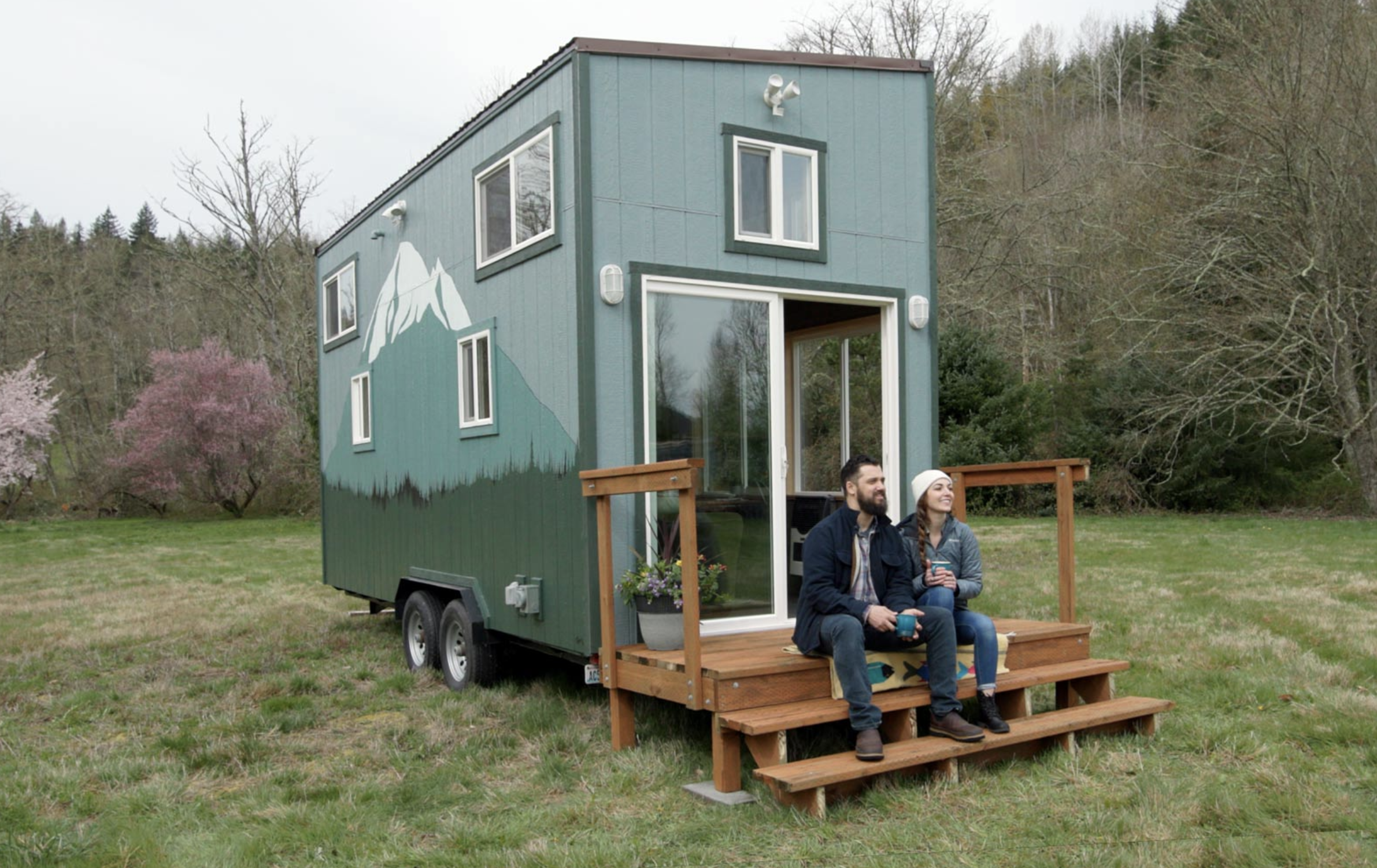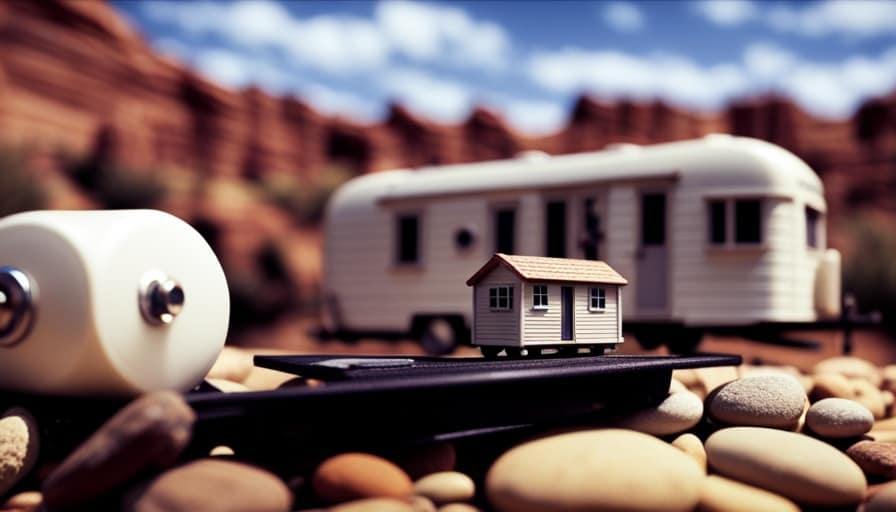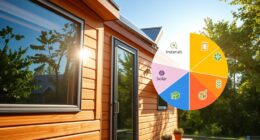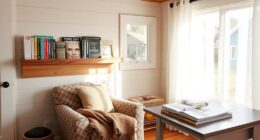Prefab tiny houses are a smart, eco-friendly way to enjoy compact living. Built off-site and assembled quickly, they save you time and money compared to traditional homes. Their modular design lets you customize layouts, add modules later, and choose sustainable materials like reclaimed wood. Modern features like smart technology and solar panels enhance comfort and efficiency. If you want to explore how these innovative homes can adapt to your lifestyle, there’s much more to discover ahead.
Key Takeaways
- Prefab tiny houses are built off-site, transported, and assembled quickly, offering time and cost savings.
- They utilize modular design for customizable layouts, sizes, and finishes to suit individual needs.
- Constructed with sustainable materials, they promote eco-friendly living and minimize environmental impact.
- Modular units can be added or reconfigured over time, supporting scalable and flexible living arrangements.
- Modern features like smart technology and energy-efficient systems enhance functionality and aesthetic appeal.
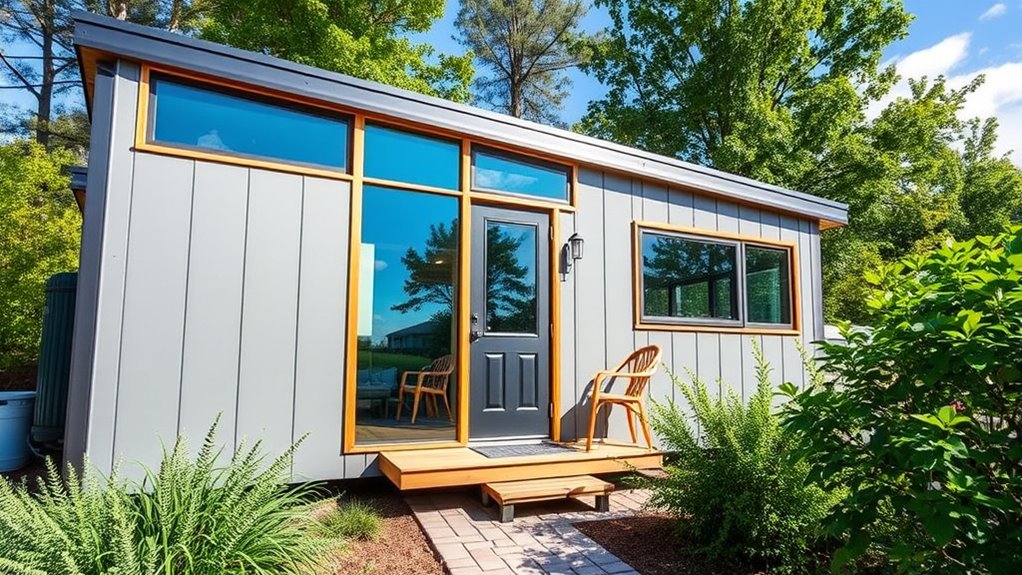
Have you ever considered how tiny houses can offer a practical and stylish living solution? If you’re exploring options for a compact, efficient home, prefab tiny houses might just be what you need. These homes are built off-site, then transported and assembled at your desired location, making the process faster and often more cost-effective than traditional construction. One of the key advantages is their sustainability. Many prefab tiny houses are made using sustainable materials, which means you’re not only reducing your environmental footprint but also creating a healthier living space. Reclaimed wood, recycled metal, and eco-friendly insulation are common choices, allowing you to enjoy a modern home that aligns with eco-conscious values. Plus, because these homes are built in controlled environments, waste is minimized, and materials are used efficiently, further supporting sustainable living.
The design philosophy behind prefab tiny houses often revolves around modular design principles. This approach means the home is constructed from standardized units or modules that can be combined in various configurations. Modular design offers remarkable flexibility—you can choose a layout that fits your lifestyle, whether you want a cozy one-room retreat or a slightly larger space with multiple areas. This method also simplifies the building process, as modules are pre-fabricated in a factory setting, reducing construction time and potential delays caused by weather or labor shortages. You’ll find that many manufacturers offer customizable options, allowing you to select the size, interior layout, and finishes, so your tiny house reflects your personal style and needs.
Another benefit of modular design is scalability. As your needs change, you can add more modules or reconfigure existing ones without starting from scratch. This adaptability makes prefab tiny houses a smart investment, especially if you’re unsure about committing to a permanent, large-scale home. Additionally, because these homes are built in sections, transportation is easier and less costly, and installation on your property tends to be quicker. Many prefab tiny houses also come with innovative features like energy-efficient appliances, solar panels, and smart home technology, which complement their sustainable materials and modular design. Creating a home that balances aesthetic appeal with practicality is increasingly achievable with these adaptable designs, making them a popular choice for modern living. All of these elements work together to create a home that’s not only stylish and functional but also environmentally responsible and adaptable to your evolving lifestyle.
Frequently Asked Questions
How Long Does It Take to Build a Prefab Tiny House?
Building your prefab tiny house usually takes between 8 to 12 weeks, depending on customization and manufacturer. You’ll find that the cost comparison favors prefab, as it’s generally more affordable and faster than traditional builds. Plus, prefab tiny houses have a lower environmental impact due to efficient manufacturing processes. You can enjoy a quicker, eco-friendly home that suits your lifestyle and budget, without lengthy construction delays.
Are Prefab Tiny Houses Customizable to Individual Preferences?
Yes, prefab tiny houses are customizable to your preferences. Thanks to their modular design, you can choose different layouts, features, and finishes that suit your lifestyle. Interior customization allows you to select everything from cabinetry to lighting, creating a space that reflects your personality. You have options to personalize your tiny house, making it a truly unique and functional home tailored specifically for you.
What Is the Typical Lifespan of a Prefab Tiny House?
A prefab tiny house typically lasts 30 to 50 years, but durability concerns can influence this. For example, a recent case study shows that well-maintained homes with quality materials can reach 50 years, while neglect can reduce lifespan. Regular maintenance requirements, like sealing and inspecting the roof, help extend your tiny house’s lifespan, ensuring you get the most out of your investment. Proper upkeep is key to longevity.
Can Prefab Tiny Houses Be Moved After Installation?
Yes, you can move prefab tiny houses after installation. Thanks to modular assembly, these homes are designed for easier relocation. The relocation process involves disassembling key components and transporting them to a new site, where they’re reassembled. While it’s generally straightforward, you should check with your manufacturer and local regulations to guarantee a smooth move. With proper planning, relocating your tiny house is certainly doable.
What Are the Financing Options for Purchasing a Prefab Tiny House?
Thinking about buying a prefab tiny house? You’ve got financing options like personal loans, RV loans, or even specialized tiny house loans. You might need to meet certain loan eligibility criteria, like credit score and income, but don’t worry—if you can get a mortgage, you can probably get tiny house financing. Just remember, securing funds is easier when you prove your tiny dream is more than just a passing whim!
Conclusion
Imagine stepping into your cozy prefab tiny house, where sunlight dances through the windows and every corner feels just right. These sleek, efficient spaces let you embrace a simpler, clutter-free life without sacrificing comfort. As you open the door to your new home, you’ll feel a sense of freedom and possibility unfolding before you. Tiny houses aren’t just a trend—they’re your gateway to a brighter, more intentional way of living.
